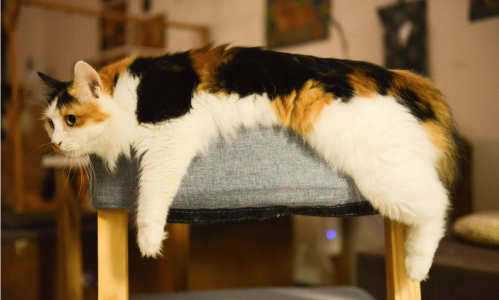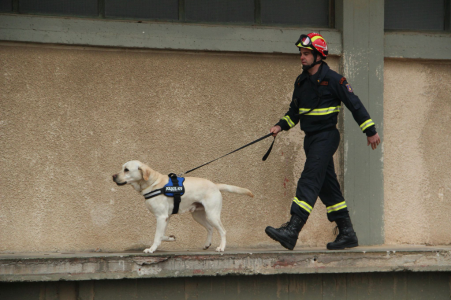Our Best Friends
By
Aubrey Razon
- Replies 0
Note from the Editor:
This article was kindly written for the SDC by member @Doctor Alan.
We live in what is called a ‘retirement resort’ and although both my wife and I love dogs and cats, we no longer keep either as a pet – too much organising when we travel. However, I have been quite amazed at how many older people have a small dog.
I see them every morning and evening, walking them around a half-hour or so route, admonishing them for ‘not behaving’, picking up their droppings, and so on. It seems as if these little dogs are part of the family.
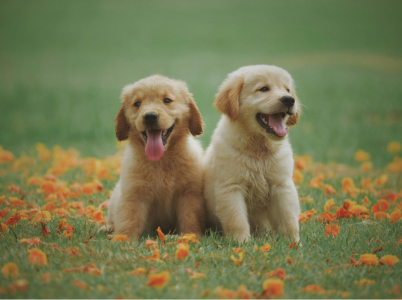
Morning walks — a daily ritual for many small dogs and their devoted owners. Image source: Chevanon Photography/Pexels.
Of course, cats are equally as well regarded, but it seems there are far more ‘dog people’ than ‘cat people’. (It has been said that dogs have ‘masters’, but cats have ‘slaves’!) It made me wonder how this has all come about. After all, dogs, even the tiny ones, are all supposed to have descended from wolves!
The history of ‘pets’:
Thousands of years ago, dogs and cats were domesticated for their usefulness. Dogs (domesticated from wolves) helped in hunting, and cats were used for controlling pests in early agricultural societies.
It should be remembered that throughout ancient Egypt, cats were treated with reverence. Cats were often mummified after death and the cat-goddess ‘Bastet’ was worshipped.
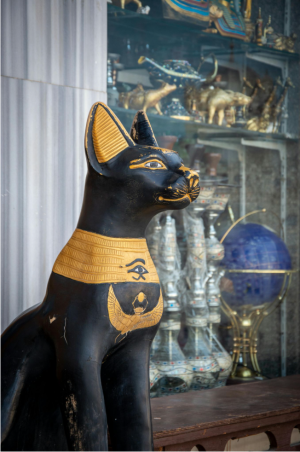
The cat goddess Bastet, worshipped in ancient Egypt for protection and grace. Image source: Vika Glitter/Pexels.
In Roman times, as well as in Greece, it was common for dogs and cats to be kept for companionship. The Chinese nobility was known to keep small dog breeds, such as the Pekingese, for their amusement and status.
In medieval times, the Catholic Church associated paganism with close ties between humans and animals – particularly cats, where accusations of witchcraft could be made.
Modern Pet-Keeping:
By the late 17th century, the pet concept began gaining more general acceptance in Europe. The 19th century is often cited as the period when modern pet ownership, characterised by the affectionate bonds we frequently see today, became more widespread.
The modern concept of a companion pet didn’t begin until the 18th and 19th centuries, and this extended into the Victorian era.
Guide Dogs (Assistance animals):
For people with autism, PTSD, or mobility-related disabilities, assistance dogs provide vital support and can transform lives in many meaningful ways.
They become part of the family unit and help to give people with disabilities more freedom and independence. They are trained to perform specific tasks for people with disabilities, helping them with physical mobility, vision or hearing loss, and medical or mental health conditions.
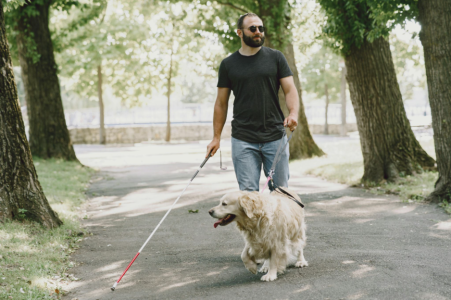
Assistance dogs provide independence and vital support for people with disabilities. Image source: Gustavo Fring/Pexels.
Their roles include retrieving dropped items, opening doors, assisting with balance, guiding people with vision impairment, alerting individuals to medical episodes like seizures, and even providing ‘deep pressure therapy’ for mental health conditions.
When trained, dogs provide deep pressure therapy by using their body weight to apply pressure to a person, which helps calm the nervous system and alleviate anxiety. The dog will lie or lean on a person’s chest, lap or feet, and this helps to ‘ground’ the person. This is described on the video below.
Emotional Support Animal (ESA):
While cats as emotional support animals do not have the same status as dogs, they can provide a great deal of comfort without specific training and if ‘recognised’ as an ESA (by a licensed medical health professional), can live with their owners in places with a ‘no pets’ policy.
For those interested in registering their cat or dog as an ESA, the first step is to consult a licensed mental health professional to determine if a cat (or dog) would be a suitable form of support for your condition.
You will then need to obtain a letter from your therapist that certifies the need for your cat (or dog) as an Emotional Support Animal. More details on this valuable support can be found here.
While pet cats, as discussed, are beneficial for their owners by providing stress relief, companionship, and improved mental and physical health, including reduced anxiety, lower blood pressure, and decreased risk of heart disease, they are also convenient companions, being low-maintenance, independent, quiet, and ideal for small living spaces.
Beyond personal benefits, cats can offer practical advantages, such as natural pest control and a way to nurture and develop a sense of responsibility, especially in children.
Rescue Dogs:
Rescue dogs are used in two main capacities: primarily as search and rescue (SAR) dogs that locate missing persons, and secondly, as ‘companion animals’ to those who are adopted from shelters to live in homes.
SAR dogs use their powerful sense of smell to find people lost in disasters, avalanches, and other dangerous situations.
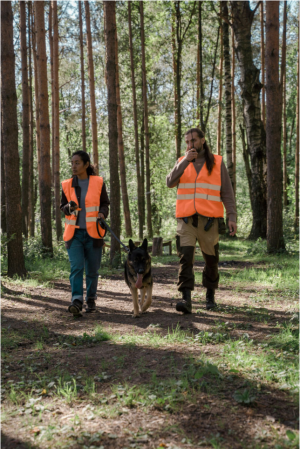
Search and rescue dogs on duty, saving lives with their extraordinary sense of smell. Image source: Ron Lach/Pexels.
Companion rescue dogs provide a loving home to animals who have been abandoned, are lost, or were confiscated due to neglect.
The breeds of most search and rescue dogs include ‘herding breeds’ like Malinois and German Shepherds, although other breeds such as Labrador Retrievers and Bloodhounds also excel at search and rescue.
Police Dogs:
In the Australian police forces, German Shepherds, Labrador Retrievers, Belgian Malinois, Rottweilers, and Dutch Shepherds are commonly used for various K9 roles, including detection and apprehension.
The NSW Police are also introducing English Springer Spaniels, while the Australian Border Force utilises Labradors for their excellent sniffing skills.
It is pretty common to see small dogs being led around the arrival carousel at an airport to ‘sniff out’ drugs concealed in travellers’ baggages.
I have tried to highlight all the really wonderful activities in which our ‘best friends’ are used. However, it should be noted that not all dogs and cats are so highly regarded, and not all humans treat them in such a caring way.
Stray dogs:
In many countries, including India and Turkey, large populations of stray dogs live freely in the streets. Similar situations are seen in parts of Eastern Europe, such as Romania and Bulgaria.
While these animals are often simply struggling to survive, their uncontrolled presence can create challenges — from the spread of diseases like rabies to occasional risks for people and pets. Addressing this issue requires approaches that protect public health while also recognising the welfare of the dogs.
Feral Cats:
Feral cats are an introduced predator in Australia. They are the same species as domestic cats, but they live and reproduce in the wild and survive by hunting or scavenging. These cats are found all over Australia in all habitats, including forests, woodlands, grasslands, wetlands, and arid areas.
They are predominantly solitary and active at night (nocturnal), spending most of the day in the safety of a shelter such as a rabbit burrow, log, or rock pile. They are carnivores and generally eat live prey like small mammals, birds, reptiles, amphibians, fish, and insects, depending on their availability. They can also carry infectious diseases that can be transmitted to native animals, domestic livestock, and humans.
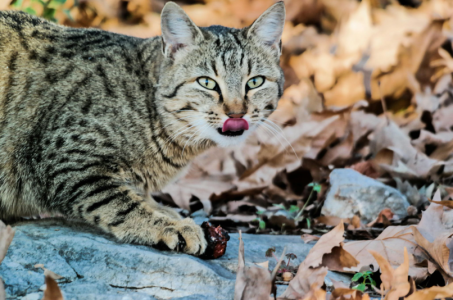
Feral cats in Australia pose challenges for wildlife, yet remain part of the ecosystem story. Image source: revac film's&photography/Pexels.
They kill over 1.5 billion native mammals, birds, reptiles and frogs, and 1.1 billion invertebrates yearly. Predation by cats is a recognised threat to over 200 nationally threatened species, and 37 listed migratory species. Feral cats have contributed to the extinction of more than 20 Australian mammal species, including the pig-footed bandicoots, lesser bilby and broad-faced potoroo.
Feral cats are a major cause of decline for many land-based threatened animals, such as the bilby, bandicoot, bettong, and numbat. Many native animals are struggling to survive, so reducing the number killed by feral cats will assist their populations in growing.
Other animals:
To end on a high note, it’s worth mentioning that as well as animals quite often being
responsible for saving their master or mistress’s life in a dire situation, elephants have been known to travel many miles to ‘attend the funeral’ of a caring individual:
‘Elephants famously traveled for miles to the home of the late Lawrence Anthony, known as the ‘Elephant Whisperer,’ to pay respects after his death in 2012. The herds, which he had previously saved, arrived at his South African home in a solemn procession, remaining for two days. This event highlighted the profound bond, memory, and empathy within animal relationships, and the elephants continued the tradition of returning to his home on the anniversary of his passing for years afterward.’
Amazing!
From the Editor:
Pets have always had a special place in our hearts whether it’s a tiny lap dog, a mischievous cat, or the working animals who change lives with their loyalty and skill.
In this week’s reflection, Dr. Al takes us on a journey through the fascinating history of pets, from their sacred roles in ancient Egypt to their modern-day work as companions, helpers, and even lifesavers.
With warmth and curiosity, he reminds us that our connection to animals isn’t just about affection, but also about respect, responsibility, and the ways they continue to shape our lives.
Do you have a memorable pet story perhaps the quirky habits of your cat, or the loyalty of a dog who’s been by your side? We’d love to hear your stories in the comments below!
Love Alan’s writing and want to read more? You might also like to read:
The Gambling Compulsion
Father’s Days
Being Old!
It’s About Time
The Twang’s the Thang!
Being Lucky
Are We All Liars?
The Coo of the Doves, The Hiss of the Guzunder
‘Till Death Us Do Part
Living in Retirement
Alan G.’s Member Spotlight: ‘Almost Famous’
The Ice Cream Job: The Tech Guy – Dr Al
The Lucky Man: The Tech Guy – Dr Al
‘Ten Pound Pom’ Hostel Living: The Tech Guy – Dr Al
Becoming a Better Driver by Accident!
Tech Talk with Dr Al: Accessibility Aids for the Home
Flying Round the World: The Tech Guy – Dr Al
Many Happy Returns of the Day!
Reaching for the Stars!
My great-grandfather’s journal of 1908: The Tech Guy – Dr Al
Pocket Money
University Days
Nasty Words and Silly Gestures
Up-Sticks and Move Interstate!

